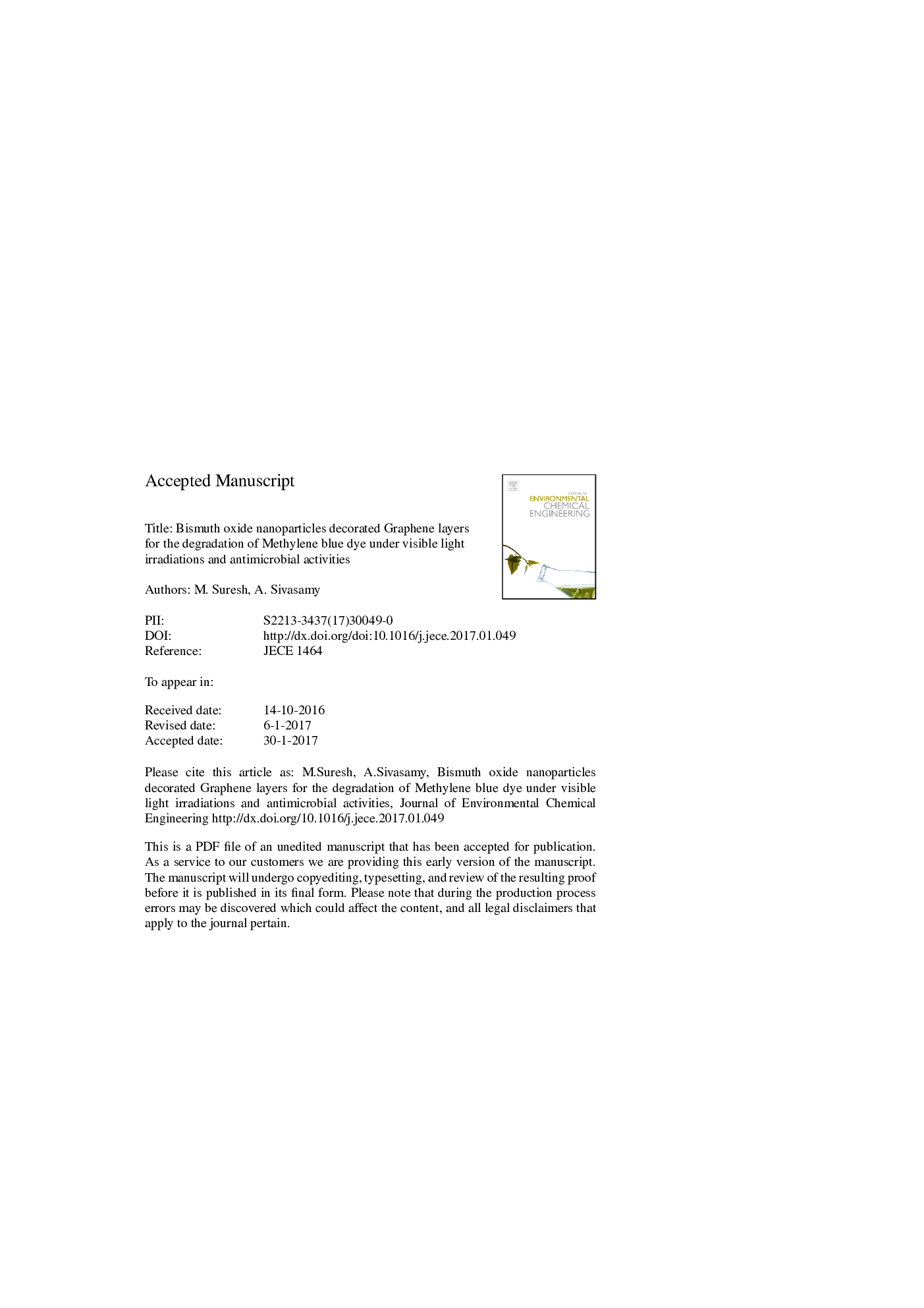| Article ID | Journal | Published Year | Pages | File Type |
|---|---|---|---|---|
| 6663947 | Journal of Environmental Chemical Engineering | 2018 | 32 Pages |
Abstract
RGO-Bi2O3 nanocomposite was synthesized by chemical oxidation of graphite into graphene oxide followed by a solvothermal method. Bismuth nitrate was used as a precursor for bismuth oxide. The prepared photocatalyst was characterized by XRD, FT-IR, UV-vis DRS, Raman and FE-SEM analyses. The XRD pattern showed the photocatalyst to be crystalline in nature. The morphology of the photocatalyst as revealed by FE-SEM images showed the bismuth oxide needles decorated on the layers of graphene oxide. The visible light photocatalytic activity of the prepared nanocomposite was tested by the degradation of a model organic dye molecule - methylene blue (MB). The preliminary studies on the effect of pH, initial dye concentration, catalyst dosage were studied. Maximum degradation of 98% was achieved at neutral pH for 10Â ml of 10Â ppm dye solution with 10Â mg of catalyst. The photocatalytic study proves the enhanced activity of the RGO-Bi2O3 nanocomposite compared with the pristine Bi2O3 under visible light irradiation. The maximum degradation percentage was achieved at 240Â min. The antimicrobial studies were carried out against gram negative and gram positive species by well diffusion method which showed the material to possess antimicrobial activity.
Related Topics
Physical Sciences and Engineering
Chemical Engineering
Chemical Engineering (General)
Authors
M. Suresh, A. Sivasamy,
